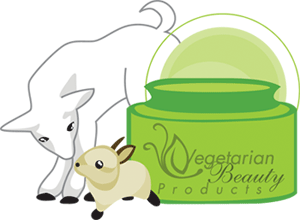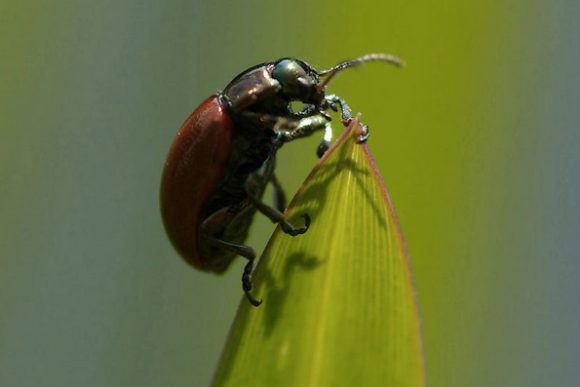Updated 1/16/20: So-called “cruelty-free” cosmetic companies are mighty sneaky in the way that they word things. They either disguise animal-based beauty product ingredients with alternate names (such as calling egg whites, “Albumen”), or use clever wording, “our finished beauty products are not tested on animals” (which usually means the ingredients were). When cosmetic giant Avon recently resumed testing cosmetics on animals, there was a backlash against, what many felt, was Avon going back on their commitment to not test on animals. But a closer examination of their “No Testing” policy showed that they had always left room in their wording to get away with resuming animal tests.
So what are some possible hidden animal ingredients in your cosmetic bag? Here is our top 5:
- Gelatin – It’s not just for jello! Often listed as “hydrolyzed protein” or “collagen,” this product consists of reconstituted dried animal bones, skin and other connective tissue waste, and comes from cows, horses and pigs. Gelatin creeps up in all kind of products, including sun screen, body wash, bubble bath, lotions and nail polish remover. Given how harsh nail polish remover is, the strengthening effects of gelatin on nail beds seems to be superseded by the nasty carcinogens present in this concoction. We suggest vegan, non-carcinogenic Priti NYC nail polish remover.
- Lanolin – While many know that lanolin is derived from sheep, there has been some deception in the beauty world, as savvy marketing execs are becoming hip to the fact that lanolin is quickly becoming a no-no to consumers in the know. They have since tried to coin the term “humane lanolin,” noting that it is obtained from the wool of the sheep, and that sheep are not slaughtered in the harvesting of lanolin. The fact is that they have just given a new name to the same old practice. Sheep are often overbred to have more wrinkles, which means they are more prone to maggot infestation. To combat this, they are subjected to a practice called “mulesing,” a procedure where strips of skin are cut from the sheep while the sheep is awake. Anesthetic and pain killers are rarely used due the size of sheep flocks. Further, once the sheep stop producing acceptable amounts of wool, they are often just shipped off to slaughter. Lanolin is typically used in lotions to soften skin. With the slew of lush, plant-based skin-softening ingredients that are available, there is really no excuse to use lanolin. We suggest the fantastic options that Jason Naturals offers.
- Carmine – Carmine is the red substance often found in crimson-colored cosmetics and is derived from Cochineal Beetles. They are soaked in hot water, dried and then crushed. If the idea of smearing crushed beetles on your lips makes you shudder, but you are not ready to say goodbye to those siren-red lips, we suggest Obsessive Compulsive Cosmetic’s vegan Lip Tar. They proudly proclaim that they are “carmine-free” cosmetic company.
- Apitoxin – It seems like toxins of animals are cropping up everywhere in skincare. People will do just about anything with the promise of looking younger. Apitoxin is bee venom, and is extracted by electrocuting the bees, which makes them secrete the venom. While diet is a big part of what makes your skin glow (all the bee venom in the world won’t help if you don’t feed your body with healthy, organic foods), what you put in your body is also extremely beneficial to the outside of your body. Dr. Alkaitis Holistic Organic Skin Food is renowned for giving your skin a gorgeous glow.
- Castoreum – Two words for you: anal sacks. Beaver (and often Civet, a small, cat-like animal) anal sack-secretions are often used in high-end perfumes. What exactly are anal sacks? You know that nasty smell from skunks when they’re scared? That is them emptying their anal sacks. While beaver anal sacks certainly do not smell as pungent, that somehow does not make it any more appealing. Apparently these little mammalian butt-bags go into the finest perfumes around, including: Many Jill Sanders scents, a few Van Cleef & Arpels scents, and Aramis. The good news is that many perfume companies have started using synthetic castoreum, but to play it safe, consider scents that are produced by those who are dedicated to the cruelty-free cause, such as Dolma vegan perfume and aftershave.
Are you a “Crusader Against Carmine” or a “Campaigner Against Castoreum”? Tell us in the comments section which cleverly disguised animal ingredient for which you are constantly on the lookout in your beauty products!
Happy shopping!


Great resource. Of the many odd and unfortunate animal/insect ingredients out there, I had never heard of Apitoxin before reading this, or the cruel way in which it is extracted. That’s a disappointing way try and look younger. Thanks for sharing this info so that people know what to avoid!